The Agroecology Haiku*
From a smallholder farmer, with love
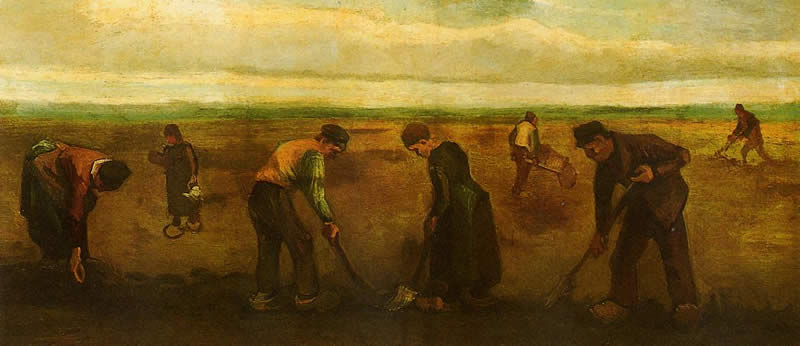 Farmers planting potatoes - Vincent Van Gogh
Farmers planting potatoes - Vincent Van Gogh
Smallholder farmers live as a forced labourers for a changing global food system, in which their success is only defined in terms of yield per hectare. Please save smallholder farmers from this clever form of bondage that affects their human rights. This is a story about the hidden tragedies behind the true costs and benefits of food production. #TrueValueFarming #FixFoodMetrics
A peasant with hunger
A proud servant of the earth’s soil
Last spasm of his soul?
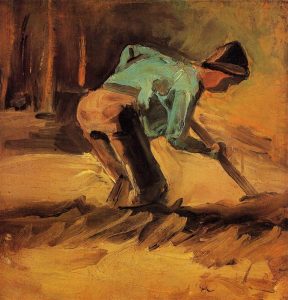 An estimated 84 percent of farms worldwide are under two hectares, in size comparable to three soccer fields[1]. You may consider smallholder farming marginal, but this is what a typical farmer looks like: 25 million farmers have a tractor, 250 million use animal traction, and 1.2 billion farmers only work with hand tools.
An estimated 84 percent of farms worldwide are under two hectares, in size comparable to three soccer fields[1]. You may consider smallholder farming marginal, but this is what a typical farmer looks like: 25 million farmers have a tractor, 250 million use animal traction, and 1.2 billion farmers only work with hand tools.
Smallholder farmers usually have a passion for farming. Unlike a passion for soccer or Netflix, it requires an unconditional devotion to their farm. Food as a source of income and livelihoods. Food as a gift from their soil. They value the food they produce in different ways, and these values evolve over time. Why do we value their food production as a pure market commodity? Is food not more than a financial benefit?
Cheap food is expensive
Broken food systems
Only yield growth per hectare counts
Bondage so clever
We thank the agriculture sector for producing more than enough calories to feed the world at a low cost. But is this public praise not a clever form of bondage? Smallholder farmers are being pushed towards industrial agriculture based on crop unification and overreliance on fertilizers, pesticides and the preventive use of antibiotics. Under such systems, short term yield growth per hectare is the single indicator for success. If we knew the hidden costs of these systems, would we still praise its productivity and efficiency in the same way?
Mother earth helps farm
Anesthetised indifference
Planet in ruins
Food systems are the source of 60% of terrestrial biodiversity loss and 33% of soil degradation in the world [2]. Agriculture is the world’s largest driver of climate change, contributing to 21% of global greenhouse-gas emissions.[3] At the same time it is the sector most affected by climate change, with smallholder farmers hit the hardest.[4] If these trends continue, nature will change the rules of the game of our food system, whether we like it or not, and whether or not we have prepared for it. With a sense of anesthetised indifference, farmers feed their livestock with cheap soy. This soy travels for months through a network of container ships and trucks before arriving on their farms. Eighty per cent of new agricultural lands have replaced tropical forests,[5] and absurdly, one third of the food that it produces will go to waste. If food waste were a country, it would be the third largest greenhouse gas emitter in the world. [6]
These are no peasants
Climate refugees as destiny
Sticky rush for nature
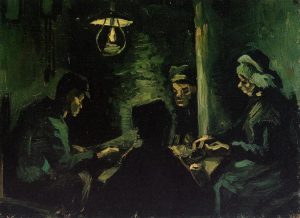 Current power imbalances in food systems are also promoting inappropriate diets. While approximately 800 million people still go hungry, 40 percent of the world’s adult population is overweight and 13 percent obese.[7] This is leading to an estimated EUR$1.8 trillion in global health costs, equivalent to ten times the total annual tax revenues of Belgium.[8] The preventive use of antibiotics in livestock also has a high cost. Approximately 70 per cent of global antibiotics use is coming from livestock[9] and science shows a worrying link with the 700,000 people that die around the world each year from antimicrobial resistant infections.[10] Furthermore, scientists estimate the health costs for pesticide exposure in the EU at US$127 billion annually[11]. These figures do not yet include the many farmers ending their lives by ingesting pesticides. Why is a hidden tragedy of suicides taking place?
Current power imbalances in food systems are also promoting inappropriate diets. While approximately 800 million people still go hungry, 40 percent of the world’s adult population is overweight and 13 percent obese.[7] This is leading to an estimated EUR$1.8 trillion in global health costs, equivalent to ten times the total annual tax revenues of Belgium.[8] The preventive use of antibiotics in livestock also has a high cost. Approximately 70 per cent of global antibiotics use is coming from livestock[9] and science shows a worrying link with the 700,000 people that die around the world each year from antimicrobial resistant infections.[10] Furthermore, scientists estimate the health costs for pesticide exposure in the EU at US$127 billion annually[11]. These figures do not yet include the many farmers ending their lives by ingesting pesticides. Why is a hidden tragedy of suicides taking place?
In addition to ignoring nature’s laws and human health, the food system also discriminates against smallholder agriculture. Smallholder farmers and others working in rural areas represent two thirds of the global total of people affected by extreme poverty[12], and 80 per cent of those suffering from hunger[13]. Smallholder farmers are living as forced labourers in a changing food system, without the formal rights to the land that they work, seeds and other crucial agricultural inputs. What if they give up? They are left with a mountain of debts.
Race to the bottom
No right to a fair price
Feed them leftovers in the dark
Consumers roll the dice
Food products are unfairly traded on a global market. Middle and high-income countries consider the world market as a residual market, with products being dumped mainly on the African market. Furthermore, financial experts predict the agricultural commodity prices with the same precision as a fortune teller reading the future in melted polar ice. Farmers’ success or failure can longer be determined by the hours of work that they put into their crops. On top of this, supermarket chains and large-scale automated processing plants treat smallholder farmers in a way one would only dare to treat mushrooms: “feed them leftovers and keep them in the dark”. In a race to the bottom, farmers compete with colleagues, in which the sonly decision factor is price and high quantity regulated output. With the share of processed food growing up to 75 percent in high income countries[14], the high quality of farmers’ products is lost on increasingly ignorant and detached consumers that often care little about the origins of their food.
Unloved or simply unknown?
Not just about food
The invisible becomes visible
Biodiversity guardian
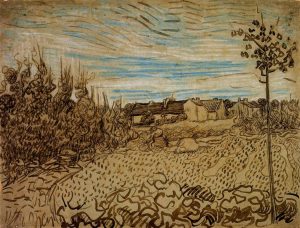 It is not only because of industrial agriculture that we are able to produce more than enough calories to feed the world today.[15] Smallholder agriculture in developing countries provides 60 percent of the food consumed around the world[16]. And if that smallholder farmer uses agro-ecological production principles, he realises yields similar to those of conventional systems.[17] [18] [19] [20] In addition, the productivity of industrial agriculture is at risk because it affects the natural resources on which it depends.[21] Synthetic fertilizers contribute to land degradation, with 52 per cent of land used for agriculture worldwide being moderately or severely affected.[22] The homogenization of food crops has reduced plant genetic resources by 75 percent worldwide. Just three cereal crops account for 60 percent of the global food energy intake. [23] [24] This leads to instability in crop yields, with up to 40 percent of yield losses caused by plant pests and diseases.[25]
It is not only because of industrial agriculture that we are able to produce more than enough calories to feed the world today.[15] Smallholder agriculture in developing countries provides 60 percent of the food consumed around the world[16]. And if that smallholder farmer uses agro-ecological production principles, he realises yields similar to those of conventional systems.[17] [18] [19] [20] In addition, the productivity of industrial agriculture is at risk because it affects the natural resources on which it depends.[21] Synthetic fertilizers contribute to land degradation, with 52 per cent of land used for agriculture worldwide being moderately or severely affected.[22] The homogenization of food crops has reduced plant genetic resources by 75 percent worldwide. Just three cereal crops account for 60 percent of the global food energy intake. [23] [24] This leads to instability in crop yields, with up to 40 percent of yield losses caused by plant pests and diseases.[25]
Not only for nature’s sake
Agro-ecology
More complex than nature docs
Not only nature’s sake…
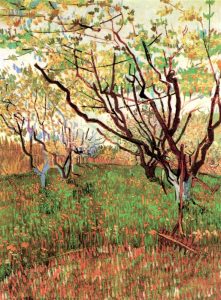 Farming in harmony with mother earth. It is more complex than processes from nature documentaries on television, but without commentaries, music and publicity. It is about agro-ecological farming systems based on the use of diversified farming landscapes and biological inputs instead of synthetic chemical inputs. The agro-ecological alternative goes a step further than organic agriculture through holistic strategies of sustained livelihoods and long-term healthy and productive agro-ecosystems.[26] Underperforming smallholder farmers often do not realize that they farm in harmony with nature. Intensive training, technology, and other investments are essential to increase their productivity without further chemical inputs. In the absence of this, smallholder farmers often end up in a vicious circle of using marginal agricultural land, production methods that further deplete land and water resources, which results in poverty.
Farming in harmony with mother earth. It is more complex than processes from nature documentaries on television, but without commentaries, music and publicity. It is about agro-ecological farming systems based on the use of diversified farming landscapes and biological inputs instead of synthetic chemical inputs. The agro-ecological alternative goes a step further than organic agriculture through holistic strategies of sustained livelihoods and long-term healthy and productive agro-ecosystems.[26] Underperforming smallholder farmers often do not realize that they farm in harmony with nature. Intensive training, technology, and other investments are essential to increase their productivity without further chemical inputs. In the absence of this, smallholder farmers often end up in a vicious circle of using marginal agricultural land, production methods that further deplete land and water resources, which results in poverty.
I do not suggest that we choose between the smallholder farmer and the industrial farm. It is about being honest in recognizing the value of services that the farmer delivers to society. And this is not just about food. Look at the role of efficient water management in favour of other sectors. Or the biodiversity on pasturelands. Agro-ecological farming techniques, for example, increase the pollination potential for pollinator dependent crops. Due to drivers such as industrial farming, 16.5 per cent of vertebrate pollinators and over 40 per cent of invertebrate pollinator species face extinction.[27] Animal pollination of crops, for which there is no substitute, provides a value of $235-$577 billion globally each year[28].
This is a “green job”
Long before the word was coined
No jobs in return
 Smallholder farmers represent the socio-economic backbone of rural areas. Farming is the main source of income and employment for 70 percent of the world’s poor living in rural areas.[29] But in middle and high-income countries, farmers are a dying breed. In Europe, only 7.5 percent of farmers are under 35 years old[30], and almost one quarter of Europe’s farmers stopped farming between 2005 and 2014. How will we compensate job losses from steering away from labour intensive jobs in agriculture? Will we be able to provide alternative employment to the 1.2 billion smallholder farmers, representing close to 20 percent of the total world population?
Smallholder farmers represent the socio-economic backbone of rural areas. Farming is the main source of income and employment for 70 percent of the world’s poor living in rural areas.[29] But in middle and high-income countries, farmers are a dying breed. In Europe, only 7.5 percent of farmers are under 35 years old[30], and almost one quarter of Europe’s farmers stopped farming between 2005 and 2014. How will we compensate job losses from steering away from labour intensive jobs in agriculture? Will we be able to provide alternative employment to the 1.2 billion smallholder farmers, representing close to 20 percent of the total world population?
We must get the story straight
Beyond a passion
Food as a gift from their soil
Unconditional devotion
A smallholder farmer does not ask for compassion, sentimentality, or nostalgia. It is critically important that we get the story straight about the true costs and benefits of food production. This concerns us all, not only farmers. Specialised high-input industrial farming is much more expensive than agro-ecological farming. We must take into account things that matter, such as the true costs of pollution, water treatment costs, health risks and employment.
Seeing the Unseen
A new lens for True Value Farming
Win-win for all
We need to grow a comprehensive vision on how and where we produce food, and what we eat. Both industrial agriculture and underperforming smallholder agriculture must evolve towards structurally diverse agro-ecological farming systems [31]. We cannot afford to fall into the trap of avoiding the complexity of this integral and holistic concept. Rather, we must embrace structurally diverse agro-ecological farming, with smallholder agriculture having an important role. The ministry of agriculture must involve fellow ministries in order to undertake holistic measures such as influencing dietary choices, wise use of biofuels and reducing food and waste. And most importantly, they must listen to smallholder farmers, eager to invest in agro-ecological farming.
Agro-ecology
Farm and nature in harmony
Rare recognition
Article and haikus by Tomas Declercq,
Environmental Consultant
@TDECLERCQ
With special thanks to TEEBAgriFood, IPES-Food and Frank Adam. The opinions expressed in this article are the author's own, they do not reflect the view and they don´t represent an official position of any of the organizations mentioned on it.
* Haiku is a form of poetry, first made popular in Japan, which has become appreciated around the world. Haiku poets are challenged to convey a vivid message in only 17 syllables. The essence of haiku is "cutting" (kiru). This is often represented by the juxtaposition of two images or ideas and a kireji ("cutting word") between them, a kind of verbal punctuation mark which signals the moment of separation and colours the manner in which the juxtaposed elements are related. (Wikipedia)

